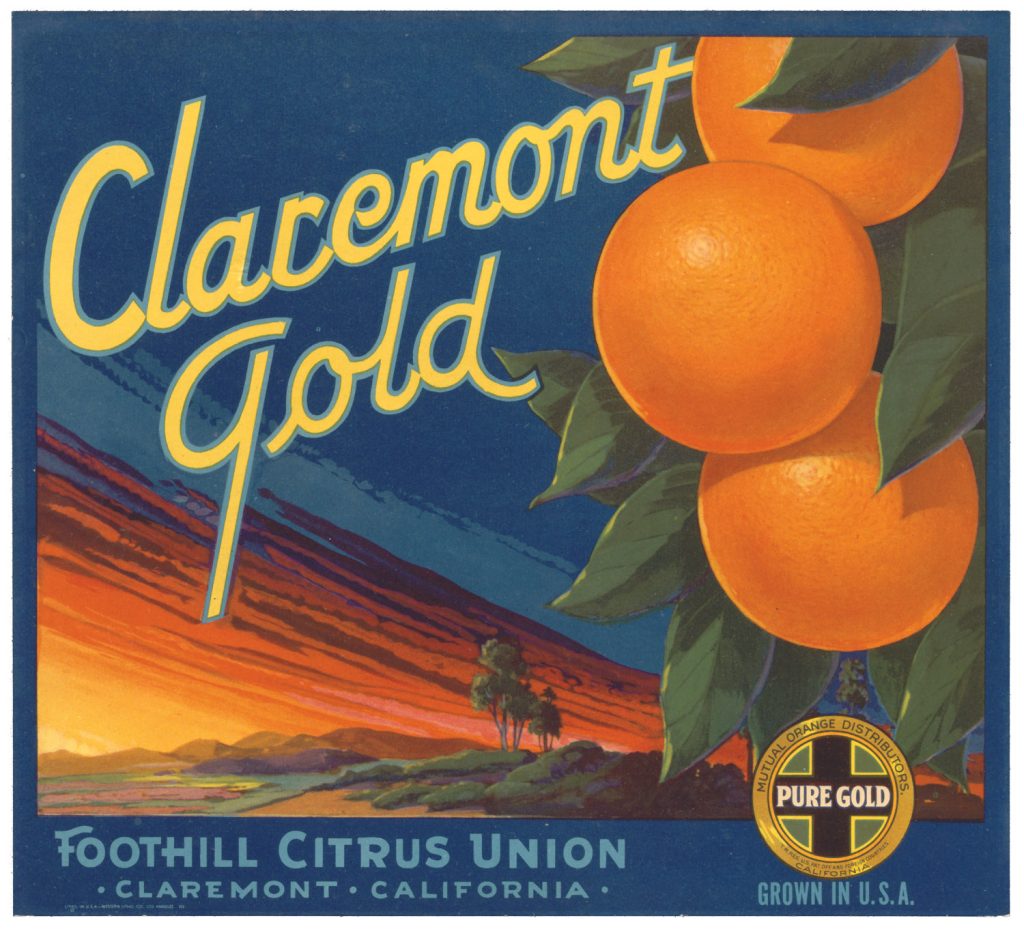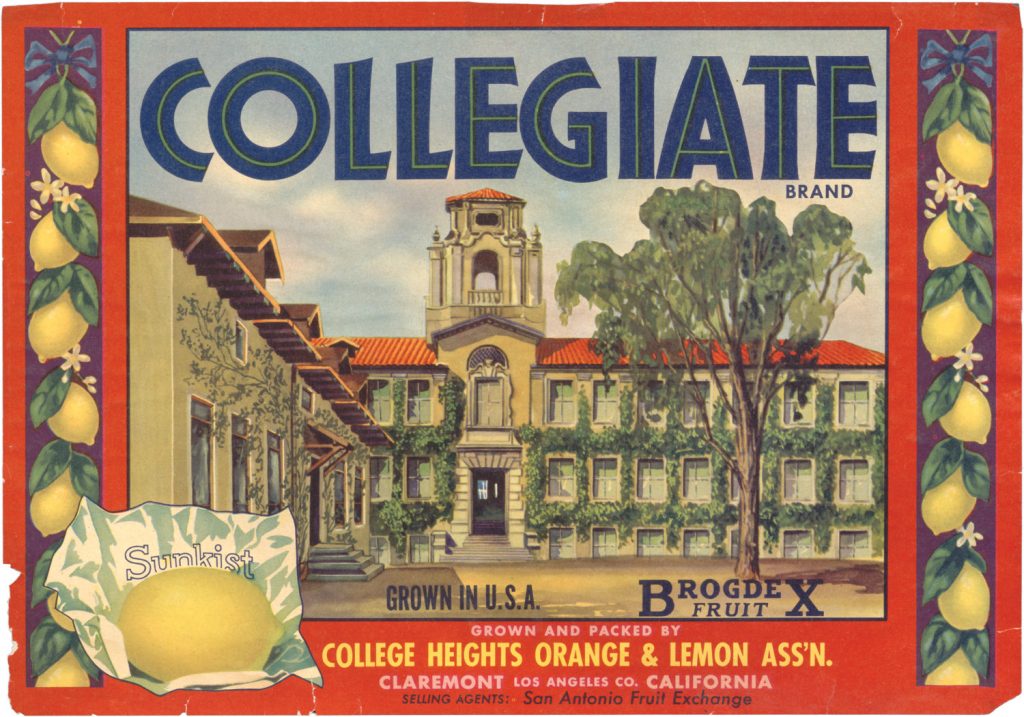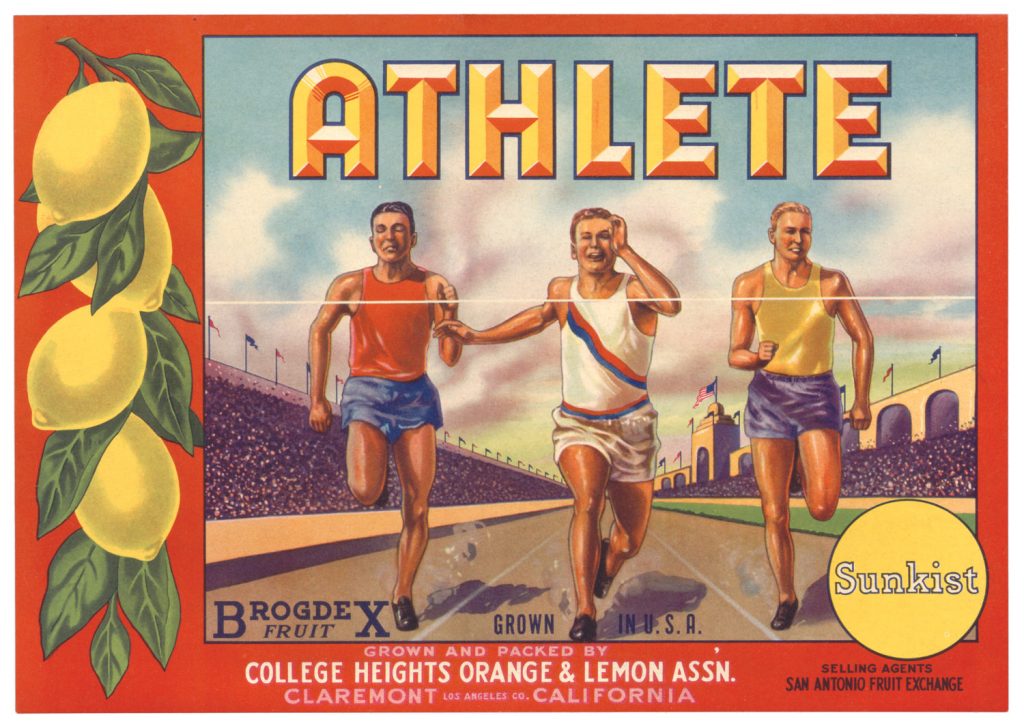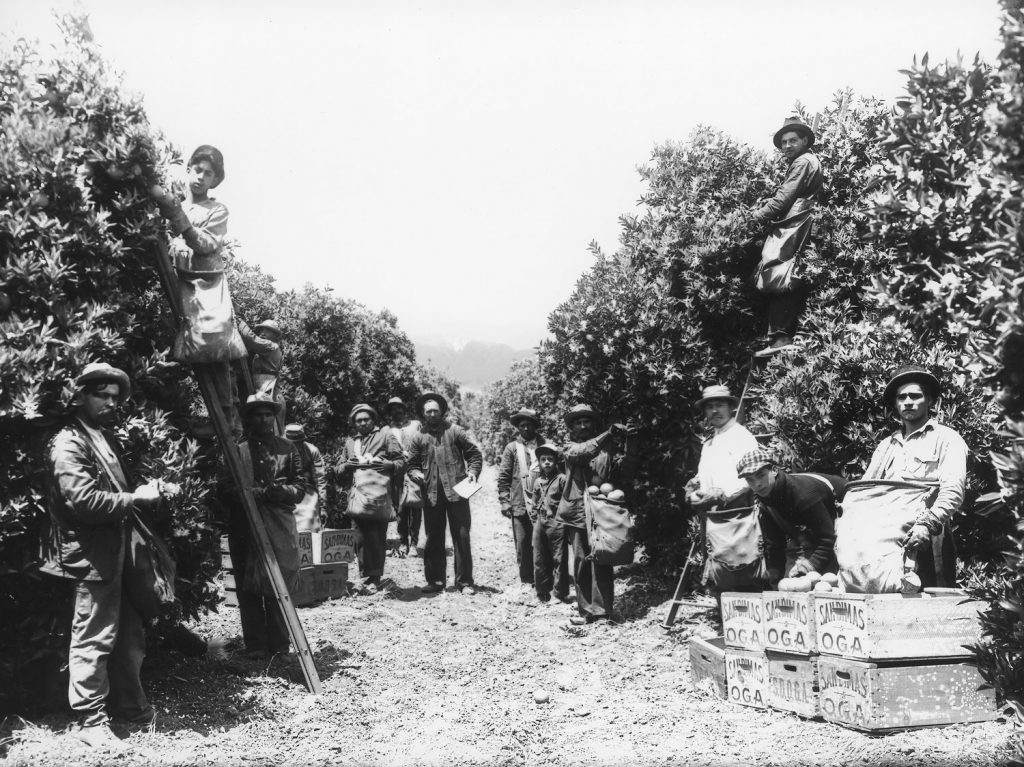The Claremont Colleges Library Special Collections’ citrus industry archives include the Oglesby Citrus Label Collection donated by the late Emeritus Professor of Biology Larry C. Oglesby and his wife, Alice. Special Collections also houses the David Boulé California Orange Collection, the Matt Garcia Papers on citrus and farm laborers, and the California Citrus Industry Collection, collected and gifted by Claremont Heritage.

The heyday of Claremont’s citrus industry in the first half of the 20th century is long past, but vibrant examples of crate labels featuring local scenes endure. The 1908 Carnegie Building, depicted below, served as the library of both Pomona College and the city of Claremont until 1914. Today, it houses classrooms and offices for politics, international relations, public policy analysis and economics.

Mason Hall, (presented below), was completed in 1923 as a state-of-the-art chemistry facility, is 100 years old this year, as is Crookshank Hall, originally a zoology building.

Today, Mason is home to classrooms and offices for history and languages, and Crookshank houses the English Department and media studies. In this view from what is now Stanley Academic Quad, Mason is at center and the building at left is Harwood Hall for Botany, built in 1915 and demolished in 1968. The displayed labels are from the Oglesby Citrus Label Collection. The late Professor of Biology Larry C. Oglesby, also known as “Doc O” to some, taught at Pomona for 30 years and was a mentor to several of the alumni featured in this issue, including Doug Bush’94, Cathy Corison ’75 and Kim Selkoe ’97.
The Los Angeles Memorial Coliseum, celebrating its centennial this year, hosted its first varsity college football game on October 6, 1923, with the USC Trojans playing none other than the Sagehens of Pomona College. (See story) The citrus label commemorates the 1932 Olympic Games, with the Coliseum’s famous peristyle incorporated below.

As commercial art, labels weren’t signed by the artists and lacked descriptions, though some might not have represented actual scenes. The image below at first suggests Bridges Auditorium, built in 1931, but Bridges has five double-height arches on each side, among other differences.

The idealized vision of the citrus industry and life in a college town depicted on crate labels was not the experience of everyone in Claremont and surrounding areas. The Matt Garcia Papers in The Claremont Colleges Library Special Collections include research materials such as photos, oral histories and newspaper clippings related to Garcia’s book A World of Its Own: Race, Labor, and Citrus in the Making of Greater Los Angeles, 1900-1970. This image of citrus pickers in San Dimas around 1930 from the Pomona Public Library collection is included in Garcia’s book and used as its cover image.

